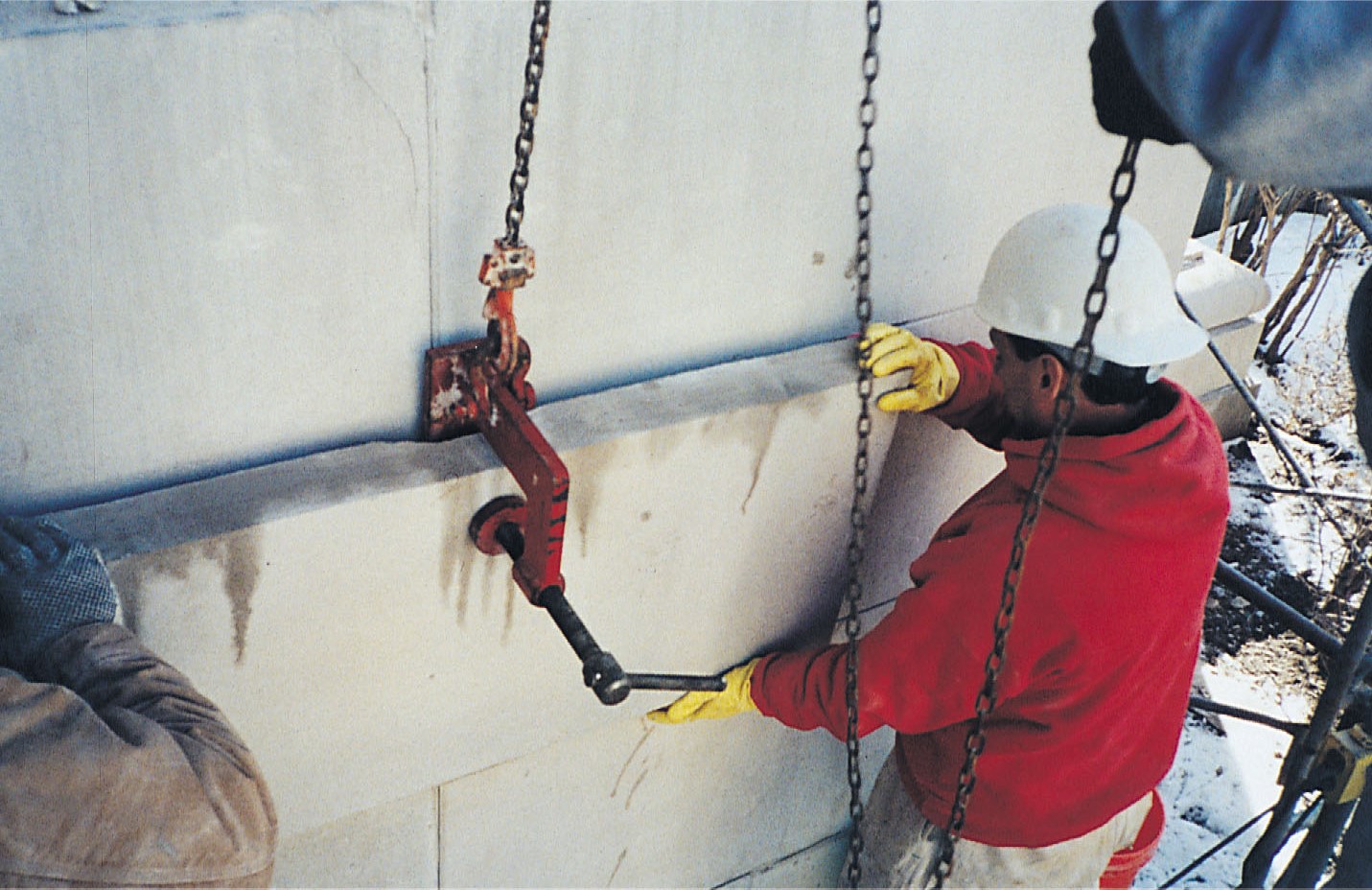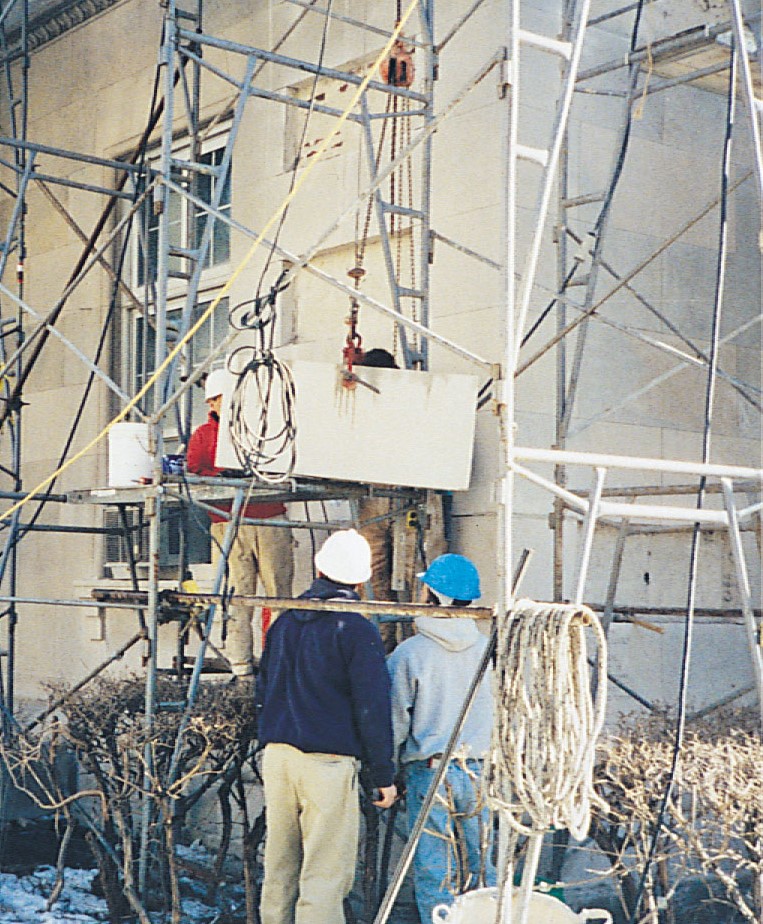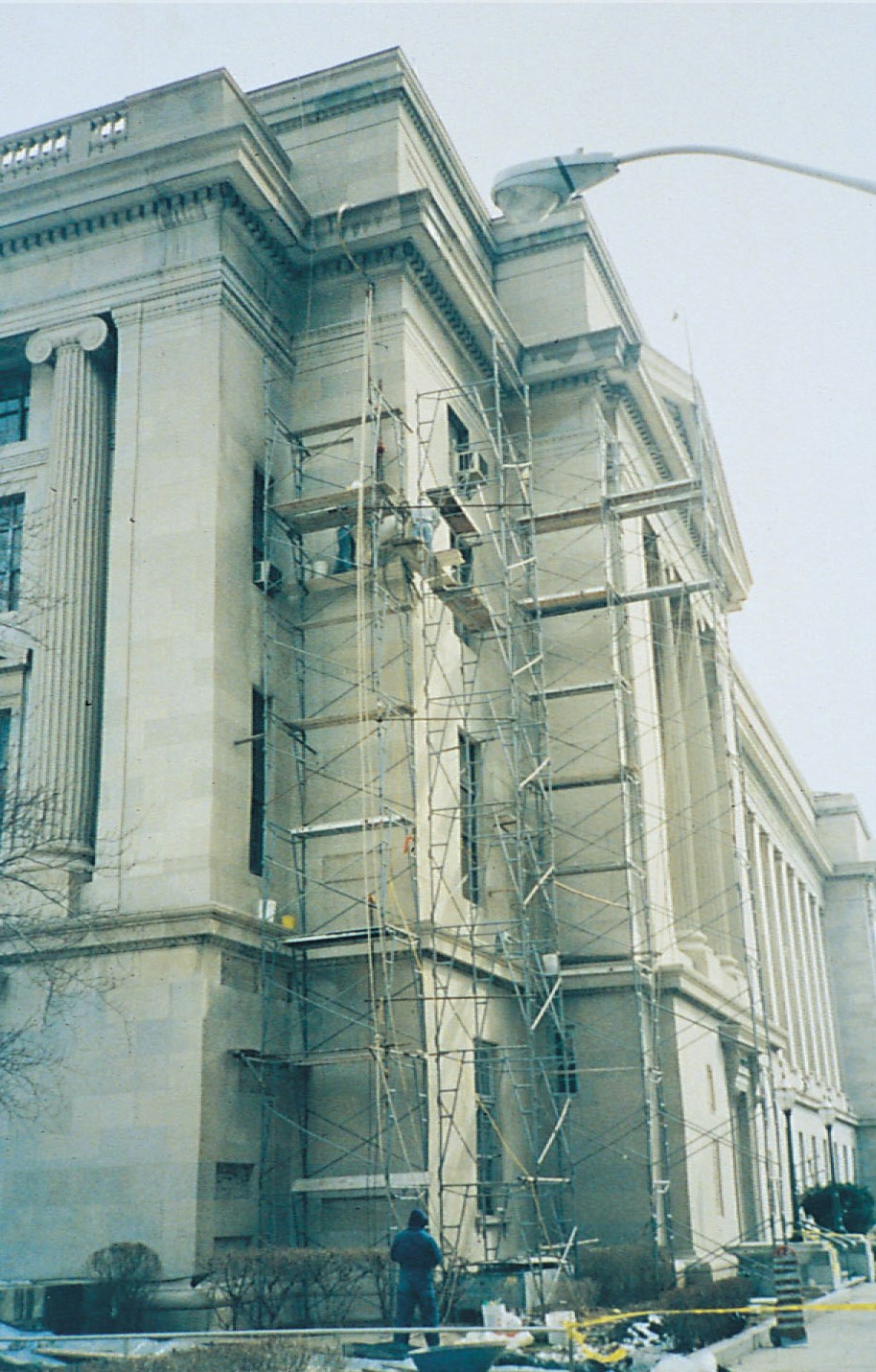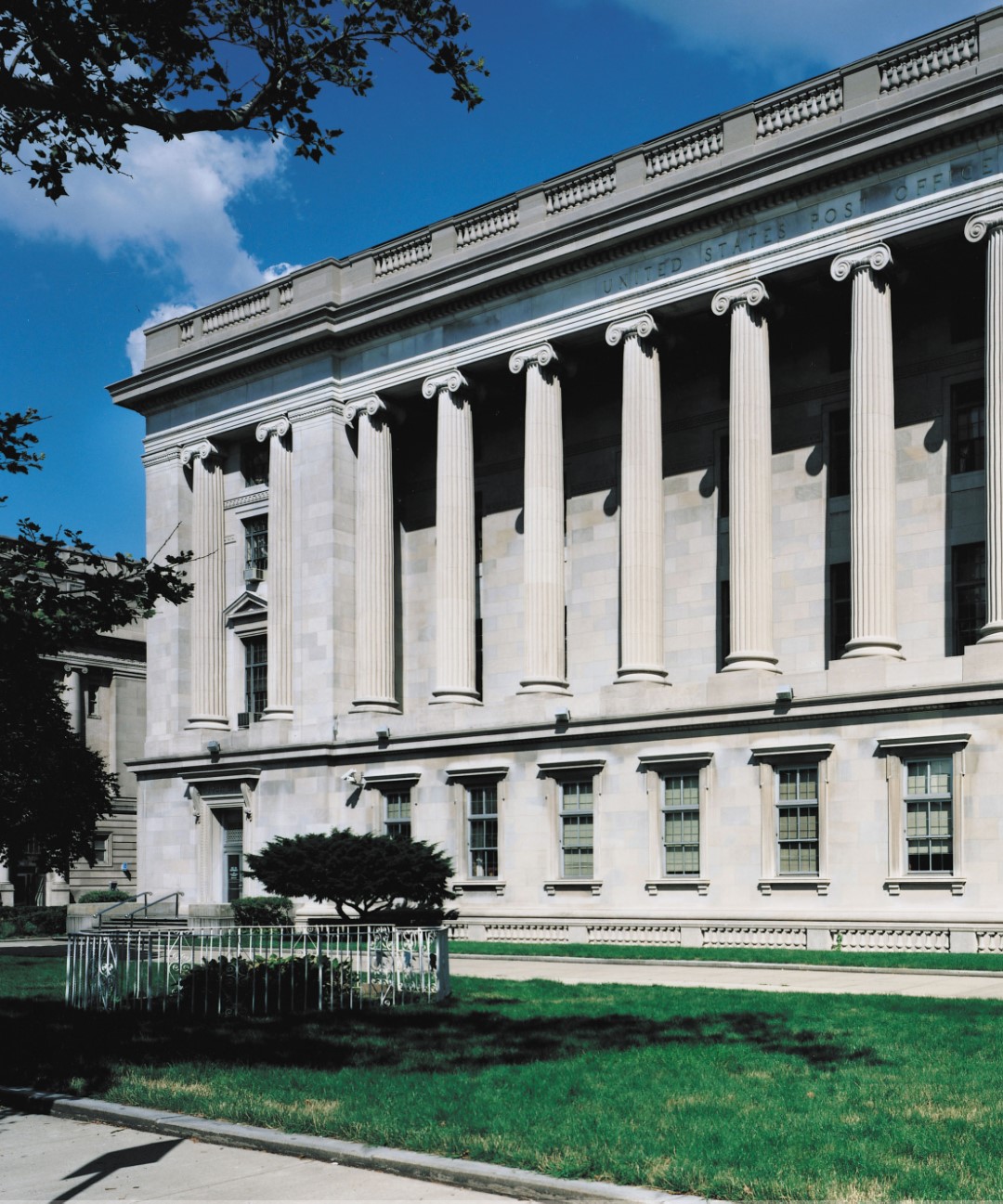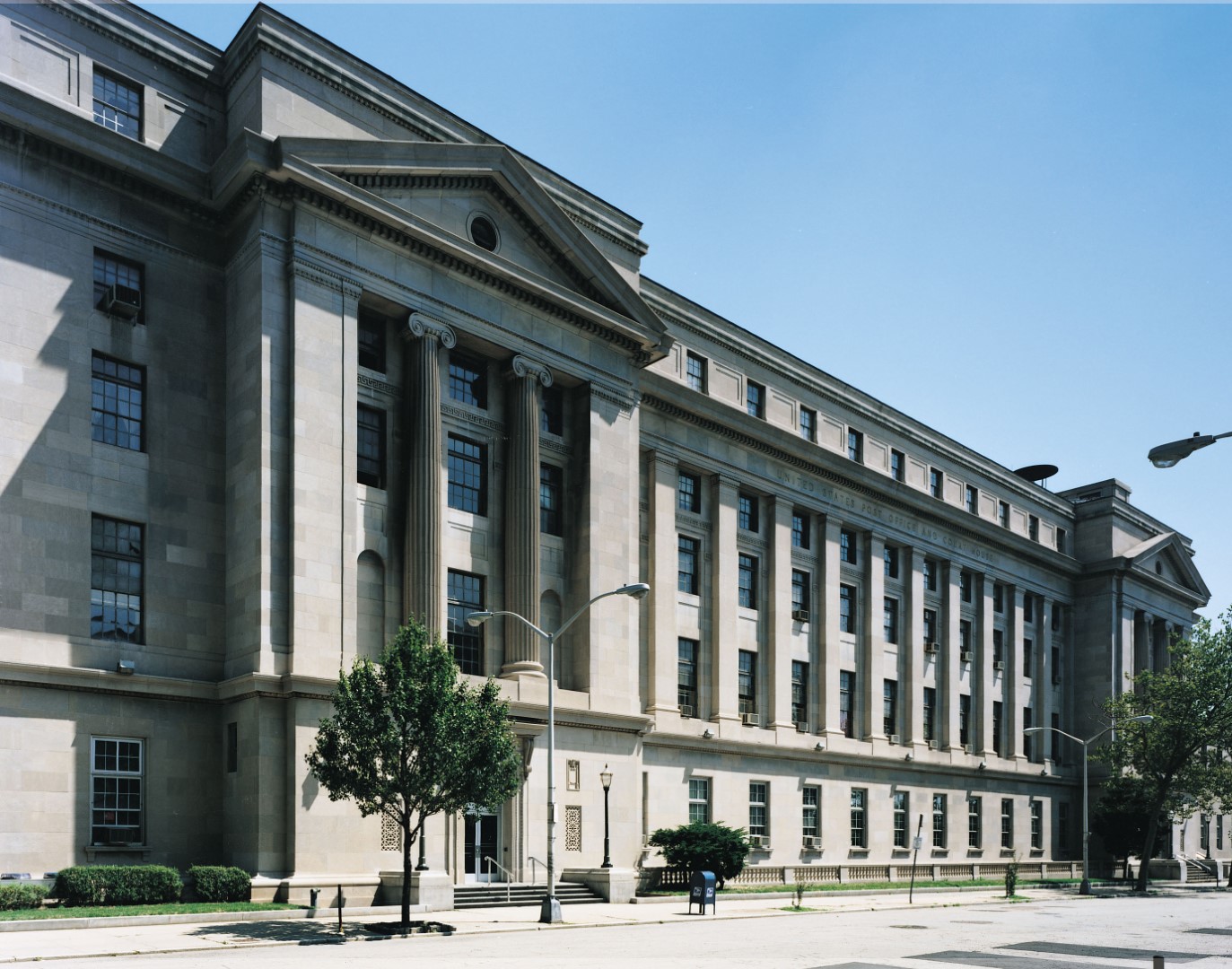
The work took the form of interior and exterior building upgrades let out in small contracts over the span of four years. Window replacement, masonry and stone repair, interior and exterior doors, historic lobby repainting, lighting restoration, and marble and aluminum repair are the projects presented here.
Testimonial
“DiGeronimo, PA drew its award for the U.S. Post Office, Newark, N.J. This is a restrained and well-thought-out upgrade to result in a handsomely revitalized civic building. This is a seamless, nearly invisible renovation.” – AIA Jury for the 1998 Honor Awards for Architecture.
Project Details
Downloads
Project Included
- Unit Stone Replacement
- Total Slab Reconstruction
- Structural Steel Repair/Replacement
- Stonework
- Stone Patching
- Repointing Masonry
- Pressure Washing
- New Brick Construction
- Masonry Surface Rehabilitation
- Masonry Cleaning
- Lintel Replacement
- Individual Brick Replacement
- Dutchman Repair
- Chemical Cleaning
- Brickwork
- Brick Facade Rebuild
- Alkaline Cleaners
- Acidic Cleaners
Glossary Terms

